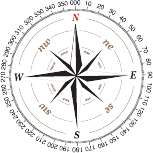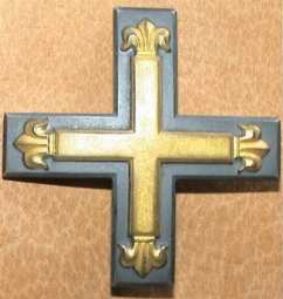Goetze, Hans Friedmann, born 03-11-1897 in Rendsburg,  Schleswig-Holstein, son of SS Brigadeführer Friedemann Goetze, who died age 75, on 22-05-1946, in Stade
Schleswig-Holstein, son of SS Brigadeführer Friedemann Goetze, who died age 75, on 22-05-1946, in Stade  and Fanny Elder. He joined the NSDAP
and Fanny Elder. He joined the NSDAP  , number 4.691.460 and the SS number 281.771, in 1935. He became a SS Hauptsturmführer
, number 4.691.460 and the SS number 281.771, in 1935. He became a SS Hauptsturmführer  on 15-05-1937 and SS Sturmbannführer
on 15-05-1937 and SS Sturmbannführer  on 12-09-1937, SS Obersturmführer
on 12-09-1937, SS Obersturmführer  on 20-04-1939 and SS Standartenführer
on 20-04-1939 and SS Standartenführer  , on 01-09-1939. He was the member of the Lebensborn Society
, on 01-09-1939. He was the member of the Lebensborn Society 
 from 01-12-1937. Commander of the SS Junkerschule “Bad Tölz”
from 01-12-1937. Commander of the SS Junkerschule “Bad Tölz”
 Schleswig-Holstein, son of SS Brigadeführer Friedemann Goetze, who died age 75, on 22-05-1946, in Stade
Schleswig-Holstein, son of SS Brigadeführer Friedemann Goetze, who died age 75, on 22-05-1946, in Stade  and Fanny Elder. He joined the NSDAP
and Fanny Elder. He joined the NSDAP  , number 4.691.460 and the SS number 281.771, in 1935. He became a SS Hauptsturmführer
, number 4.691.460 and the SS number 281.771, in 1935. He became a SS Hauptsturmführer  on 15-05-1937 and SS Sturmbannführer
on 15-05-1937 and SS Sturmbannführer  on 12-09-1937, SS Obersturmführer
on 12-09-1937, SS Obersturmführer  on 20-04-1939 and SS Standartenführer
on 20-04-1939 and SS Standartenführer  , on 01-09-1939. He was the member of the Lebensborn Society
, on 01-09-1939. He was the member of the Lebensborn Society 
 from 01-12-1937. Commander of the SS Junkerschule “Bad Tölz”
from 01-12-1937. Commander of the SS Junkerschule “Bad Tölz”
 from 01-12-1937 until 01-03-1938. He was commander of the Führer SS Heimwehr
from 01-12-1937 until 01-03-1938. He was commander of the Führer SS Heimwehr  in Danzig, in 1939. SS Heimwehr “Danzig”was an SS unit established in the Free City of Danzig before World War II. It fought with the German army against the Polish Army during the invasion of Poland. After this it became part of the 3rd SS Division Totenkopf
in Danzig, in 1939. SS Heimwehr “Danzig”was an SS unit established in the Free City of Danzig before World War II. It fought with the German army against the Polish Army during the invasion of Poland. After this it became part of the 3rd SS Division Totenkopf  and ceased to exist as an independent unit. He joined the 3rd Regiment of the SS Totenkopf Infanterie, from October 1939 until 27-05-1940. The division had officers from the SS-Verfügungstruppe (SS-VT), of whom many had already seen action in Poland. The division was commanded by SS-Obergruppenführer, Kommandeu, Totenkopf” Division. Murdered Ernst Röhm
and ceased to exist as an independent unit. He joined the 3rd Regiment of the SS Totenkopf Infanterie, from October 1939 until 27-05-1940. The division had officers from the SS-Verfügungstruppe (SS-VT), of whom many had already seen action in Poland. The division was commanded by SS-Obergruppenführer, Kommandeu, Totenkopf” Division. Murdered Ernst Röhm  in 1934, Theodor Eicke
in 1934, Theodor Eicke
 Through the Battle of France, the division was generally equipped with ex-Czech we. Goetze was shot and killed by a British sniper while leading his SS-Totenkopf Infanterie Regiment 3 near Le Paradis in France. Soldiers of the 2nd Battalion, the Royal Norfolk Regiment,
Through the Battle of France, the division was generally equipped with ex-Czech we. Goetze was shot and killed by a British sniper while leading his SS-Totenkopf Infanterie Regiment 3 near Le Paradis in France. Soldiers of the 2nd Battalion, the Royal Norfolk Regiment,  nicknamed “The Holy Boys”, “The Fighting Ninth”, “The Norfolk Howards”, had become isolated from their regiment. They occupied and defended a farmhouse against an attack by Waffen-SS
nicknamed “The Holy Boys”, “The Fighting Ninth”, “The Norfolk Howards”, had become isolated from their regiment. They occupied and defended a farmhouse against an attack by Waffen-SS  forces in the village of Le Paradis.
forces in the village of Le Paradis.  After running out of ammunition, the defenders surrendered to the German troops. The Germans led them across the road to a wall, and machine-gunned them. Ninety-seven British troops died. Two survived, with injuries, and hid until they were captured by German forces several days later. Privates Albert Pooley and William O’Callaghan
After running out of ammunition, the defenders surrendered to the German troops. The Germans led them across the road to a wall, and machine-gunned them. Ninety-seven British troops died. Two survived, with injuries, and hid until they were captured by German forces several days later. Privates Albert Pooley and William O’Callaghan 
 had hidden in a pigsty and were discovered later by the farm’s owner, Mme Creton, and her son. The two soldiers were later captured by a Wehrmacht unit and spent the rest of the war as prisoners of war. The Le Paradis massacre was a war crime committed by members of the 14th Company, SS Division Totenkopf, under the command of SS Hauptsturmführer Fritz Knöchlein
had hidden in a pigsty and were discovered later by the farm’s owner, Mme Creton, and her son. The two soldiers were later captured by a Wehrmacht unit and spent the rest of the war as prisoners of war. The Le Paradis massacre was a war crime committed by members of the 14th Company, SS Division Totenkopf, under the command of SS Hauptsturmführer Fritz Knöchlein  . It took place on 27-05-1940, during the Battle of France, at a time when the British Expeditionary Force (BEF)
. It took place on 27-05-1940, during the Battle of France, at a time when the British Expeditionary Force (BEF)  was attempting to retreat through the Pas-de-Calais region during the Battle of Dunkirk.
was attempting to retreat through the Pas-de-Calais region during the Battle of Dunkirk.Death and burial ground of Goetze, Hans Friedmann.

After the war, Knöchlein was located, tried and convicted by a war crimes court, the two survivors acted as witnesses against him. For his part in the massacre, Knöchlein was executed. Upon being found guilty, Knöchlein applied for clemency, arguing that he had a wife and four children that depended on him, but was sentenced to be hanged, age 37, a verdict that was carried out on 28-01-1949 in Hamburg.

 Goetze is buried on the German War Cemetery of Bourdon in France. Also buried there are are SS Hauptsturmführer, 1st Battalion of the SS Standarte, the II Battalion of the SS Standarte “Deutschland”,
Goetze is buried on the German War Cemetery of Bourdon in France. Also buried there are are SS Hauptsturmführer, 1st Battalion of the SS Standarte, the II Battalion of the SS Standarte “Deutschland”,  Georg Kubisch, he married Hitler’s first love Maria Mimi Reiter,
Georg Kubisch, he married Hitler’s first love Maria Mimi Reiter,  Flyer Aces Oberleutnant, Staffelkapitän of 11./JG 2, 52 victories, Rudi Pflanz, Hauptmann, Fliegerass, Befehlhaber 3rd Staffel, Horst Tietzen, Hauptmann, Fliegerass, Befehlhaber 3rd Staffel, Rudolf Trenn. Major, Kommandeur Jagdgeschwader 27, nicknamed “Afrika”
Flyer Aces Oberleutnant, Staffelkapitän of 11./JG 2, 52 victories, Rudi Pflanz, Hauptmann, Fliegerass, Befehlhaber 3rd Staffel, Horst Tietzen, Hauptmann, Fliegerass, Befehlhaber 3rd Staffel, Rudolf Trenn. Major, Kommandeur Jagdgeschwader 27, nicknamed “Afrika”  Heinrich Setz. By 08-05-1945, the remains of JG 27 were based near Salzburg, Austria. JG 27’s commander surrendered to the American forces nearby. On 02-11-1944, JG 27 suffered its highest losses on a single day, losing 53 aircraft with 27 pilots killed and 11 wounded to the escort fighters of the USAAF, in return for six P-51 Mustangs claimed. Although official records were lost at the end of the war, research suggests Jagdgeschwader 27 claimed over 3.100 kills for some 1.400 aircraft lost, and lost approximately 827 pilots killed, missing or POW during 1939-45. Twenty-four JG 27 pilots earned the Ritterkreuz des Eisernen Kreuzes.
Heinrich Setz. By 08-05-1945, the remains of JG 27 were based near Salzburg, Austria. JG 27’s commander surrendered to the American forces nearby. On 02-11-1944, JG 27 suffered its highest losses on a single day, losing 53 aircraft with 27 pilots killed and 11 wounded to the escort fighters of the USAAF, in return for six P-51 Mustangs claimed. Although official records were lost at the end of the war, research suggests Jagdgeschwader 27 claimed over 3.100 kills for some 1.400 aircraft lost, and lost approximately 827 pilots killed, missing or POW during 1939-45. Twenty-four JG 27 pilots earned the Ritterkreuz des Eisernen Kreuzes.

Message(s), tips or interesting graves for the webmaster: robhopmans@outlook.com


















Leave a Reply